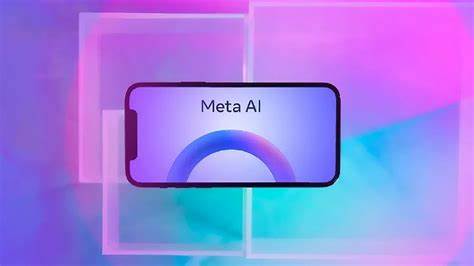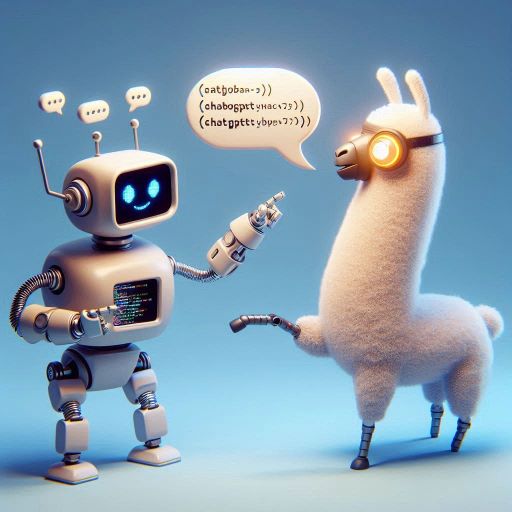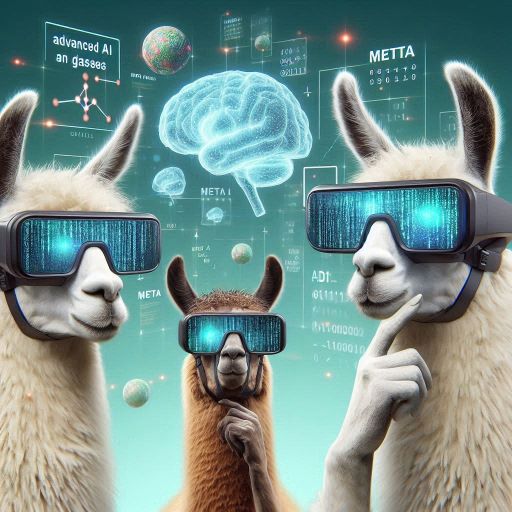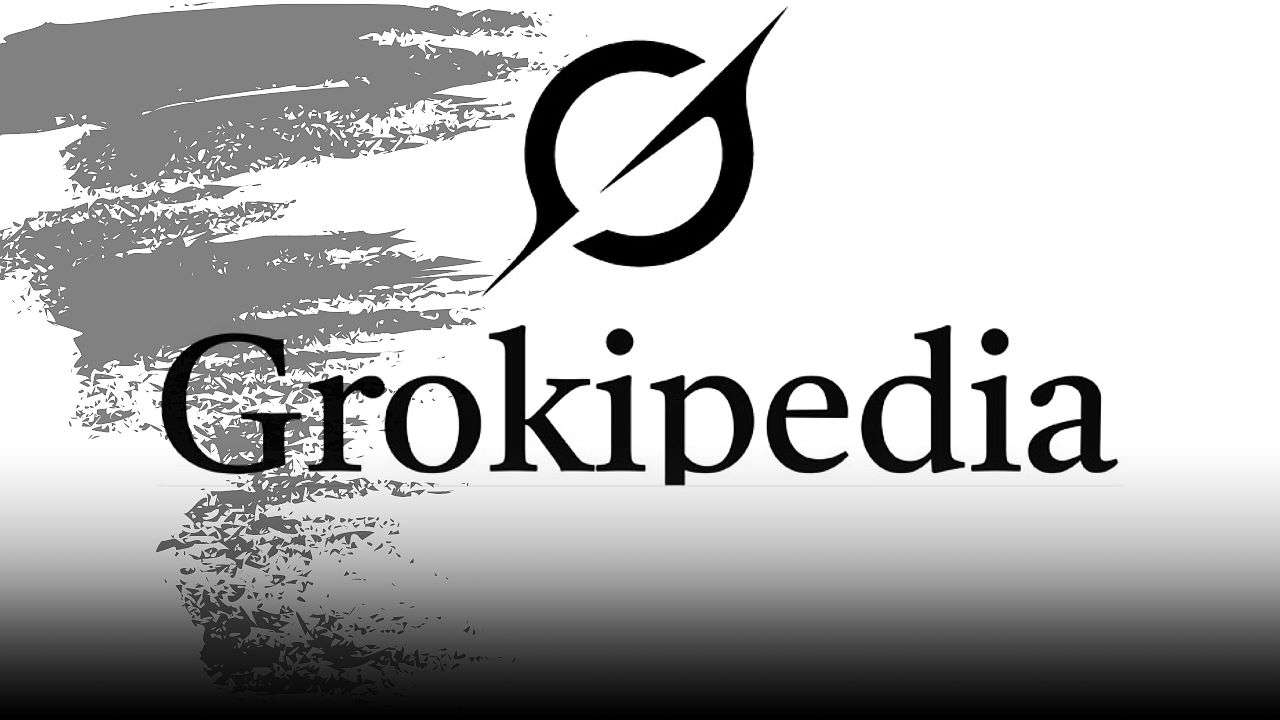Meta’s recent introduction of Llama-3 has sent ripples of excitement throughout the AI sphere. This groundbreaking large language model (LLM) not only showcases remarkable capabilities but also sets a pioneering benchmark for responsible development. Let’s delve into the distinctive features of Llama-3 and its potential to redefine our technological interactions.
Table of Contents

Beyond Metrics: Understanding Llama-3’s Advantages.
While benchmark performance is significant, the true measure of innovation lies in practical utility. Here’s what distinguishes Llama-3 from its counterparts:
- Precision in Execution: Picture a system capable of not just crafting diverse content but also adhering precisely to user-defined parameters such as style, tone, and factual accuracy. Llama-3 excels in comprehending and executing intricate tasks, offering a level of customization and fidelity that revolutionizes creative endeavors and software development alike.
- Cognitive Proficiency: Llama-3 transcends mere data recitation, possessing the ability to access and process extensive knowledge from diverse sources. This enables it to draw logical inferences and furnish comprehensive responses to queries. Imagine a research aide adept at sourcing pertinent literature and discerning emerging trends, offering invaluable support to scholars, students, and information seekers navigating the vast expanse of knowledge.
- Scalable Efficiency: Training colossal LLMs entails considerable computational resources. Meta’s strides in training methodologies have rendered Llama-3 remarkably efficient, facilitating the development of potent models with reduced resource expenditure. This efficiency sets the stage for even grander models, propelling us closer to the realm of genuine artificial general intelligence (AGI).
The Ethical Imperative of Responsible AI
Meta’s commitment extends beyond sheer prowess to encompass responsible development, manifested through features such as:
- Content Integrity: Llama-3 is primed to identify and circumvent the generation of objectionable content, underscoring its role in fostering safe and ethical utilization. This proactive stance towards content moderation mitigates the risks associated with AI bias, engendering confidence in its application.
- Transparency and Rationale: Developers are empowered to discern the rationale underlying Llama-3’s outputs, facilitating scrutiny of its responses for biases or limitations. Transparency forms the bedrock of trust in AI systems, ensuring their judicious deployment.
Llama-3: Pioneering Applications
The potential applications of Llama-3 are manifold, promising transformative impact in various domains:
- Educational Paradigm Shift: Envision tailored educational experiences attuned to individual learning styles, with Llama-3 crafting bespoke learning materials, elucidating complex concepts, and offering constructive feedback. Such personalized interventions hold the key to enhancing critical thinking and communication skills among learners.
- Scientific Breakthroughs: Llama-3’s adeptness at parsing voluminous datasets can unveil concealed patterns and correlations, catalyzing breakthroughs in fields like medicine, materials science, and climate research.
- Business Optimization: From crafting targeted marketing content to furnishing intelligent customer support, Llama-3 stands to streamline business operations and elevate customer interactions. Its potential to personalize campaigns, develop responsive chatbots, and generate engaging social media content heralds a new era of customer engagement.
Charting the Future Course
Llama-3 epitomizes a significant stride in LLM evolution, blending technological prowess with ethical stewardship. As Meta continues to refine and unveil more potent iterations, the landscape of human-computer interaction stands poised for unprecedented transformation. The integration of LLMs like Llama-3 into our daily lives heralds a paradigm shift in how we learn, work, and engage with the world.

Security Expects Of Llama-3
There isn’t a lot of publicly available information about specific security features built into Llama-3 itself. Here’s what we know based on available sources:
- Focus on Responsible Development: Meta emphasizes responsible AI development for Llama-3. This likely includes measures to mitigate security risks, but the specifics haven’t been disclosed yet.
- Content Moderation: Llama-3 is trained to avoid generating harmful or offensive content. This is a security measure to prevent the spread of misinformation and limit malicious use of the model.
- External Resources: Security best practices for LLMs are still being developed. Research on “Securing Tomorrow’s AI World Today: Llama Guard Defensive Strategies for LLM Application” explores potential defensive strategies but isn’t specific to Llama-3.
Overall, security for Llama-3 is likely addressed through a combination of training data, model design, and potentially external security measures.

ChatGPT vs Llama-3
Llama-3 and ChatGPT represent two distinct instances of large language models (LLMs) developed by different organizations, each tailored for specific purposes and applications. Here’s a breakdown of some key differences:
- Development Team: Llama-3 is developed by Meta (formerly Facebook), while ChatGPT is developed by OpenAI. These are separate entities with distinct goals and approaches to AI development.
- Specialization: Llama-3 may have been optimized for specific tasks or industries, given Meta’s focus on various applications across its platforms. On the other hand, ChatGPT, particularly versions like GPT-3.5, is designed to excel in conversational contexts and general language understanding across a wide range of topics.
- Training Data and Scale: The training data and scale used for training Llama-3 and ChatGPT may differ. Meta and OpenAI likely have access to different datasets and computational resources, which can influence the model’s performance and capabilities.
- Features and Capabilities: While both models are capable of generating human-like text, they may prioritize different features or capabilities based on their intended use cases. For example, Llama-3 may prioritize accuracy in specific domains or tasks, while ChatGPT might focus more on generating engaging and contextually relevant responses in conversational settings.
- Ethical Considerations: Both Meta and OpenAI have emphasized the importance of responsible AI development, but the specific measures and approaches they take to ensure ethical usage of their models may vary. This could include practices related to content moderation, transparency, and explainability.
- Availability and Accessibility: The availability and accessibility of Llama-3 and ChatGPT may differ. OpenAI has made various versions of its models, including ChatGPT, available for public use through APIs, while Meta’s models might be used primarily for internal purposes or specific partnerships.
Overall, while Llama-3 and ChatGPT are both examples of advanced LLMs, they represent distinct offerings developed by different organizations with unique priorities, capabilities, and applications.
Join the Dialogue!
What are your reflections on Llama-3 and the trajectory of AI advancement? Share your insights in the comments section below!





